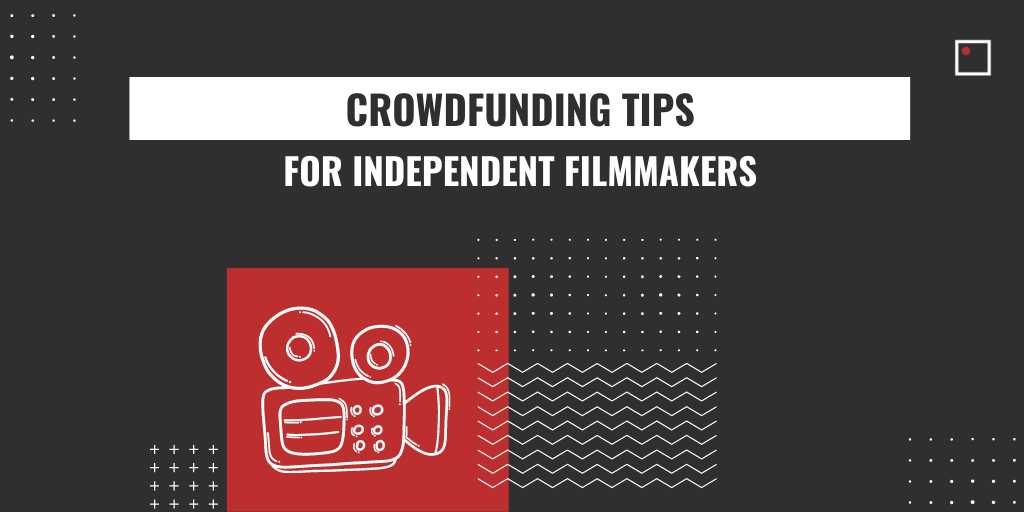
Funding independent films is never easy. The difficulties receiving grants and finding other sources of funding is a full-time job beyond the time it takes to actually work on the film itself!
Salam Films is a Vancouver-based international film production company that’s less than 48 hours away from ending our first crowdfunding campaign an alternative financing tool for creative and startup projects that’s emerging in North America, Europe and the Middle East.
We’re running our campaign to raise post-production funds for feature documentary, WAJD: Music, Politics & Ecstasy. The film traces Syrian-Canadian director Amar Chebib’s journey through Syria and Turkey to learn Arab Ottoman music. There he discovers its deep connection to Sufism and the sociopolitical influences that led to its suppression. The film is ultimately a story about this music’s ability to invoke a heart opening experience of universal beauty.
We’re making this film because we’re inspired to share the beauty of this music that has inspired us with the rest of the world. On September 4th we gratefully reached and surpassed our goal of $15,000, a few days before our campaign deadline of September 8th. This was not an easy feat, and we’re dedicated to continuing our work at the same pace until the end of our campaign. We have only 2 days left to reach our new goal of $20,000 so that the funds beyond our initial goal can go towards hiring an editing/story consultant and to doing a final sound mix at a professional studio.
Here’s a list of tips that incorporate some of what we’ve learned along the way:
- Crowdfunding is a full-time jobBefore you take the plunge into a crowdfunding campaign, make sure you do your homework. Research the various crowdfunding platforms, find out what you need in order to register with them and how their rules work. With Kickstarter.com, one of the most well-known platforms (and the one we went with) you need to have an American bank account and that means an American co-producer or partner.An important thing to know about Kickstarter is that the achievement of your goal works on an all or nothing basis. In other words, if you don’t reach your goal, everyone who contributed is refunded their pledge. This might sound scary, but it also adds urgency to your campaign.
Each platform works a bit differently, so it’s important to get informed and ask questions. It’s also important to research statistics so that you can make informed decisions about things like the length of your campaign and how high to set your goal.
We found a lot of useful information after attending a workshop with local filmmaker Ian Mackenzie. Keep an eye out for such information sessions that you can attend in person. There’s also a lot of information available online. Do your research early so that once you actually get started, you can dedicate your time where it needs to go.
When your campaign is running, you have to be on top of it pretty much all the time. You need to constantly be outreaching, sending emails, engaging with people via social media, finding relevant interest groups, attending events and generating content. It’s a full-time job indeed.
- It’s not about charityWhen you first get started, you may feel a sense of hesitation in asking for donations. We certainly did in the early stages of exploring this model, but then we realized that crowdfunding is about much more than just asking for money. It’s an exchange between you as a filmmaker and the community around you.You are investigating an important human issue and translating it into an art form that people can digest on a level that goes far deeper than the thinking mind. We all play different and integral roles within a functioning society. Filmmakers and other artists offer celebrations of culture, information that isn’t otherwise obvious, deep explorations of ideas and stories that shape our understanding of the world.
Ian MacKenzie recently wrote a piece that goes into more detail about why crowdfunding transcends the individualistic consumer model into one of interdependence. Another important note about crowdfunding is that it allows filmmakers to retain all copyrights and frees them from pressure to modify the film according to any government or private institution or corporation’s interests.
Crowdfunding is about maintaining this kind of independence while also being aware of interdependence with the community surrounding the film. Filmmakers and cultural communities both need each other and crowdfunding is a beautiful manifestation of this. It’s important to reflect on this concept and on why you’re crowdfunding in the first place. If you’ve done this inner work and come from a grounded place when you run your campaign, it will be reflected in the exchange that you set out to have with the world.
- The campaign video is keyFilmmakers have an advantage over other creative crowdfunding projects in that they know how to, and have resources for making videos.The actual campaign video is one of the most important components of the campaign. Some very interested people will take the time to read through the information you post on your campaign page, but most people will just watch the video.
The video gives people a taste of your film, potentially displays some of your footage (depending on what stage you’re at) and gives people an opportunity to meet you and listen to why this project is important to you and to them. Make sure this comes across in the video and make sure you’re genuine. In our case, both the filmmaker and producer appeared in the video, highlighting or stressing the importance if the appeal.
- Be strategic & activeAfter about a week into our campaign, we were told by Kickstarter that we weren’t being aggressive enough. That’s when we realized that there’s no time for shyness when running a crowdfunding campaign.We started posting messages on Facebook and Twitter two to three times per day (on each platform). We constantly thanked our backers and made sure they knew how grateful we were (and are!). We posted interesting articles and videos that relate to our content. We also released Kickstarter updates and videos twice per week. This included film teasers as well as video blogs that gave people an idea of what we’ve been up to.
Also remember that people are busy and they’re not going to take the time to find your latest update or video release. Make it easy for them. Release fresh content often and post your campaign link often.
People use social media at different times of the day. This is especially important if you’re thinking about audiences in different time zones.
By the third week of our campaign, one of our friends jokingly compared us to CNN due to our constant updates! But this is more than just a backhanded complement; Our updates and activity helped to create buzz and maintain momentum around our project. It showed everyone how excited we were and that we are dedicated to this project. Applying focus and strategy to your campaign are just as important as letting creativity flow and having fun with it.
- Be active online & offlineBoth online and offline engagement through crowdfunding give you the opportunity to start connecting with your audience in the early stages of your film and to test out some of your content. Even though crowdfunding platforms exist online and much of the engagement happens through email and social media, it’s important not to limit your outreach to online only.What relevant events are happening during your campaign? Hand out postcards with a striking visual and simple message that gets to the heart of your film. Host your own event to mark the launch of your campaign and to hold a space for the community forming around your film. Screen footage, hold a discussion, reveal information about your journey in making the film and invite feedback from people.
Interacting with people during your own and other events is a great way to build relationships with people who are interested in your content, who resonate with your message and who want to share both of those things with people in their own networks.
- Reach outDuring the early stages of our campaign, we took marker to chart paper and brainstormed who we could reach out to among the connections in our networks.Who are the key people that would be interested in your project? Who are the influential people who would be willing to share your campaign? This exercise proved to be an effective way to awaken possibilities that we may not have thought of otherwise.
Be strategic in how you reach out to people. Come up with a basic email skeleton with all the relevant information (so that you don’t have to come up with your film synopsis over and over again) and take the bits and pieces you need as is relevant for each contact. Don’t bombard people with too much information, but also be conscious that not everyone in the world knows what crowdfunding is. It’s still a new concept, so it goes a long way to explain the philosophy behind it and the way it actually works.
Sometimes (though not always) it’s useful to specifically mention that you’re looking for donations. Sometimes people think that the only way they can help is by posting your campaign page on Facebook and forget that they too can contribute, even a small amount. There are also perks involved and it’s not a bad deal to pay $25 for an early HD digital download of the film.
- Be AuthenticWe mentioned the importance of being genuine in your campaign video, but this extends to every aspect of your campaign.Make sure you outline where the money you are trying to raise will go. Write and speak from a genuine place in your thank you’s and your updates.
Crowdfunding campaigns are not just about showing how capable you are of creating an effective and professional final product; they’re about showing the filmmakers behind the film and authentically connecting with people and communities. Your authenticity will show through your work and will go a long way towards running a successful campaign.
Our last words
The Canada Media Fund recently released a report on Crowdfunding in a Canadian Context: Exploring the Potential of Crowdfunding in the Creative Content Industries. This speaks volumes to how popular this tool is becoming and reflects that it’s being recognized as a legitimate tool within the creative industry. Crowdfunding is bringing power to everyday people to support films they believe in and want to see made.
Final tip: Make sure you make your campaign URL obvious and easy to find. We received feedback multiple times from people saying that they couldn’t find the link to our Kickstarter page on Facebook. This was hard for us to understand because it seemed so obvious from our point of view, but that’s because we had been living and breathing Kickstarter for days and weeks! It’s important to step out of that space and to make it as easy as possible for people to find the information they’re looking for.
Facebook: facebook.com/salamfilms
Twitter: twitter.com/salamfilms
Vimeo: vimeo.com/salamfilms
Thank you & Salam!
Salam Films Team
www.salamfilms.com
Guest blogger: Patricia Marcoccia, Associate Producer for WAJD: Music, Politics and Ecstasy




Leave a Reply
Want to join the discussion?Feel free to contribute!